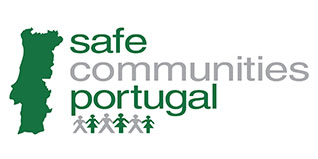The population of Sines, on the Alentejo coast, is alarmed by the increase of stray dogs roaming the city streets, forcing the municipality to set up a collection centre to try to stop the phenomenon.
“There are several packs that are more or less identified, some with about 30 dogs. As the dogs are not sterilized, every three months there are between 20 and 30 dogs”, according to Alexandra Bento, President of “4 Patas”, animal protection association in Sines (Setúbal district).
Along with some volunteers and two cares, the caretaker spends part of her days trying to help “the 180 or so stray dogs” so far counted by the association, which spends nearly 10,000 euros each year on clinics and medicines to help the animals.
“Our daily routine is to help these animals, rescue them when they are injured and try to find owners for their babies. Many times it is not possible, because after three or four months, they already know how to defend themselves, making their rescue very difficult”, she says.
The animals “are fed daily by care givers”, two 70-year-old women who receive food provided by the association for “dogs in small shelters”.
Built by volunteers, mostly cardboard and palletized, the shelters “protect them from rain and cold” and become permanent home for packs who recognize carers and tolerate their daily visits in exchange for food and water.
But these sites can become a public health problem, and she is advocating changes in legislation to “allow sterilization of street dogs” and to prevent “the pack from continuing to grow”.
Without a kennel, wandering animals congregate in groups around large commercial areas, in neighbourhoods, gardens and the outskirts of the city and do not go unnoticed by most people who fear attacks.
“There are sometimes people who are attacked,” Susa Mayor Nuno Mascarenhas admits to Lusa, claiming to have ‘inherited’ a problem that has been going on for many years since the closure of the only kennel that existed in the county.
The Lusa agency asked the authorities for more information regarding possible complaints of dog attacks on the public road, but to no avail.
This year alone, a total of 70 dogs were collected in the city of Sines and “most of them were given up for adoption,” explains the mayor, who advanced this year with the construction of an Official Pet Collection Center (CRO).
“The camera is trying to pick up the dogs and find locations in private [canine hotel] units, paying to let the animals, but we have recently decided to move forward with the work of the CRO, which we expect to be completed by 2020 to meet these needs,” the statement said. Mayor
This “much faster response” is applauded by the Sines animal advocacy association, but “not enough” to “accommodate the number of stray dogs that currently exist in the city” and which, according to Alexandra Bento, “has been getting worse, with the increased abandonment of companion dogs.”
“The camera rescues these animals, which are the most dangerous, because they can’t walk in the street to some temporary boxes that are full. Therefore, the work of the CRO is welcome, but it would be essential not only for Sines but for the whole country to be allowed to sterilize the street dogs or to advance with the construction of ‘pack spaces’, “argues the official.
According to the mayor, the collection centre, with an investment of 197 thousand euros, “will be just a transit zone” for a large number of these stray animals, since it is planned to build an inter-municipal kennel to “minimize this problem”.
“The five municipalities of the Alentejo coast (Sines, Santiago do Cacém, Grândola, Alcácer do Sal and Odemira) have decided to build an intermunicipal kennel in Santiago do Cacém, a project that is at a very early stage and will provide a sufficient response to the problems that we have had in this region, ”he says.
